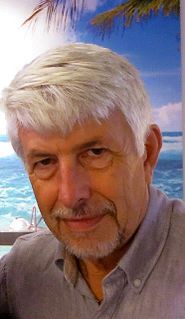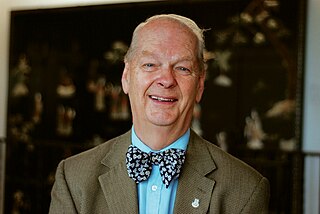SIGCOMM is the Association for Computing Machinery's Special Interest Group on Data Communications, which specializes in the field of communication and computer networks. It is also the name of an annual 'flagship' conference, organized by SIGCOMM, which is considered to be the leading conference in data communications and networking in the world. Known to have an extremely low acceptance rate (~10%), many of the landmark works in Networking and Communications have been published through it.

The Association for Psychological Science (APS), previously the American Psychological Society, is an international non-profit organization whose mission is to promote, protect, and advance the interests of scientifically oriented psychology in research, application, teaching, and the improvement of human welfare. To this end, APS publishes several journals, holds an annual meeting, disseminates psychological science research findings to the general public, and works with policymakers to strengthen support for scientific psychology.

Environmental psychology is an interdisciplinary field that focuses on the transactions between individuals and their surroundings. It examines the way in which the natural environment and our built environments shape us as individuals. Environmental Psychology emphasizes how humans change the environment and how the environment changes humans' experiences and behaviors. The field defines the term environment broadly, encompassing natural environments, social settings, built environments, learning environments, and informational environments.
Daniel Stokols is Research Professor and Chancellor's Professor Emeritus of Social Ecology in the Departments of Psychology and Social Behavior and Planning, Policy, and Design, and founding dean of the School of Social Ecology at the University of California, Irvine. He also holds appointments in Public Health, Epidemiology, and Nursing Science at UCI. His recent research has examined factors that influence the success of transdisciplinary research and training programs. Additional areas of Stokols' research include the design and evaluation of community and work site health promotion programs, the health and behavioral impacts of environmental stressors such as traffic congestion and overcrowding, and the application of environmental design research to urban planning and facilities design. Professor Stokols is past President of the Division of Environmental, Population, and Conservation Psychology of the American Psychological Association (APA) and a Fellow of the APA and the Association for Psychological Science.

Robert Gifford is professor of Psychology and Environmental Studies at the University of Victoria. His main research interests are environmental psychology, social psychology, and personality psychology. He has worked on nonverbal behavior and on climate change behavior barriers. Gifford is the author of 5 editions of Environmental Psychology: Principles and Practice, which has also been translated into Japanese, and edited Research Methods for Environmental Psychology (2016). From 2004 to 2016, he was the editor in chief of the Journal of Environmental Psychology. Gifford also serves on the editorial boards of Architectural Science Review and Applied Psychology. In addition, he has served as President of the environmental divisions of the American Psychological Association, the International Association of Applied Psychology, and the Canadian Psychological Association. </ref>
The American Psychology–Law Society (AP–LS) is an academic society for legal and forensic psychologists, as well as general psychologists who are interested in the application of psychology to the law. AP–LS serves as Division 41 of the American Psychological Association and publishes the academic journal Law and Human Behavior.

The International Communication Association (ICA) is an academic association for scholars interested in the study, teaching and application of all aspects of human and mediated communication.

The American Society for Environmental History (ASEH) is a professional society for the field of environmental history. The ASEH was founded in 1977 and its mission is to increase understanding of current environmental issues by analyzing their historical background. The ASEH promotes scholarship and teaching in environmental history, supports the professional needs of its members, and connects their work with larger communities. The organization's goals are to expand the understanding of the history of human interaction with the natural world, to foster dialogue with multiple disciplines and the public, and to support global environmental history that benefits the public and scholarly communities.

The Sálim Ali Centre for Ornithology and Natural History (SACON) is a national centre for information, education and research in ornithology and natural history in India. It was inspired by and named in honour of Salim Ali, the leading pioneer of ornithology in India. It is an autonomous organisation established in 1990 as a public- NGO partnership between the MoEF&CC, and the Bombay Natural History Society (BNHS) under the Centre of Excellence Scheme and registered under the Indian Societies Registration Act. Its headquarters are at Anaikatti, Coimbatore, Tamil Nadu, India. SACON is associated with the Ministry of Environment and Forests
The European Association of Environmental and Resource Economists (EAERE) is an international scientific association.
The IEEE Computational Intelligence Society is a professional society of the Institute of Electrical and Electronics Engineers (IEEE) focussing on "the theory, design, application, and development of biologically and linguistically motivated computational paradigms emphasizing neural networks, connectionist systems, genetic algorithms, evolutionary programming, fuzzy systems, and hybrid intelligent systems in which these paradigms are contained".
Louise Chawla is a Professor emerita in the College of Architecture and Planning at the University of Colorado, where she is a member of the Executive Committee of the Children Youth and Environments Center for Research and Design and co-editor of the Children Youth and Environments Journal.
The North American Association of Sports Economists (NAASE) is an organization that promotes and facilitates research and teaching in the economics of sports. NAASE was founded in 2007. The organization emerged from the many sessions focused on sports economics at the Western Economic Association International (WEAI) meetings held throughout the 1990s and early 2000s. NAASE maintains a close relationship to the WEAI and the annual NAASE business meeting takes place at this conference. Although many NAASE members are academics, membership is open to anyone with an interest in sports economics, and NAASE counts undergraduate and graduate students in economics and other related disciplines like sport management as members, as well as non-economists with an interest in sports economics. Despite the regional scope implied by its name, NAASE has members from around the world, and many past and current officers have been from outside North America. NAASE currently has around 100 members.
Galen Cranz is a Professor of the Graduate School, Architecture at the College of Environmental Design at the University of California, Berkeley, who studies the social and cultural bases of architectural and urban design. She is a certified teacher of the Alexander Technique, a kinesthetic educational system, who founded the new field "Body Conscious Design."
The International Environmental Design Contest (IEDC) is a competition hosted by the WERC Consortium and the Institute for Energy & the Environment at New Mexico State University. It is an annual event in which student teams prepare written, oral, poster, and bench-scale model presentations in response to design tasks. The student solutions are judged by industry and academic professionals. For an explanation of the contest tasks, awards, and a listing of participating teams, see below.

David F. Hardwick's MD, FRCPC, FCAP career focused on the field of paediatric pathology. Hardwick was involved with The University of British Columbia (UBC) for more than sixty years as both a student and professor, and is a Professor Emeritus. His research included the first description of histopathologic implications of differential survival of Wilms' Tumors to pathogenesis of L-methionine toxicity and administrative/management research.
ISSAC, the International Symposium on Symbolic and Algebraic Computation, is an academic conference in the field of computer algebra. ISSAC has been organized annually since 1988, typically in July. The conference is regularly sponsored by the Association for Computing Machinery special interest group SIGSAM, and the proceedings since 1989 have been published by ACM. ISSAC is considered as being one of the most influential conferences for the publication of scientific computing research.

The Society for the Teaching of Psychology (STP) is Division 2 of the American Psychological Association. It is an academic society that promotes effective pedagogy while providing supports for teachers of psychology at all levels. Although it is one of the divisions of the American Psychological Association, it does not require its members to join the APA. The STP provides access to peer-reviewed teaching resources, such as course syllabi and e-books, free of charge to the general public through its website. Some sections of the website require STP membership to gain access.
Clare Cooper Marcus is a prominent educator in landscape architecture and architecture and a pioneer in the field of social issues in housing, open space design, and healing landscapes.
The International Society of Exposure Science (ISES), is a non-profit organization established in 1990 by a group of scientists and engineers, including Paul Lioy. The formation of this society was at least partially in response to a National Research Committee (NRC) on Exposure Assessment that held a series of meetings and workshops beginning in 1987 that formed the foundation of exposure science and defined basic principles. The expertise of members in ISES is interdisciplinary and draws upon a broad array of disciplines, including: exposure assessment; biochemistry; risk assessment; bioinformatics; physiology; toxicology; epidemiology; ecology; environmental chemistry; and environmental engineering. The Society’s membership is professionally diverse and includes academic, governmental, and private sector scientists, as well as policy makers who have a common interest in exposure science. ISES has operated with a President, President-elect, Treasurer, and Secretary as well as Councilors. Councilors are elected from the membership and are allocated from the various professional categories that represent Society membership. The first set of Bylaws was approved by the membership in 1991.







